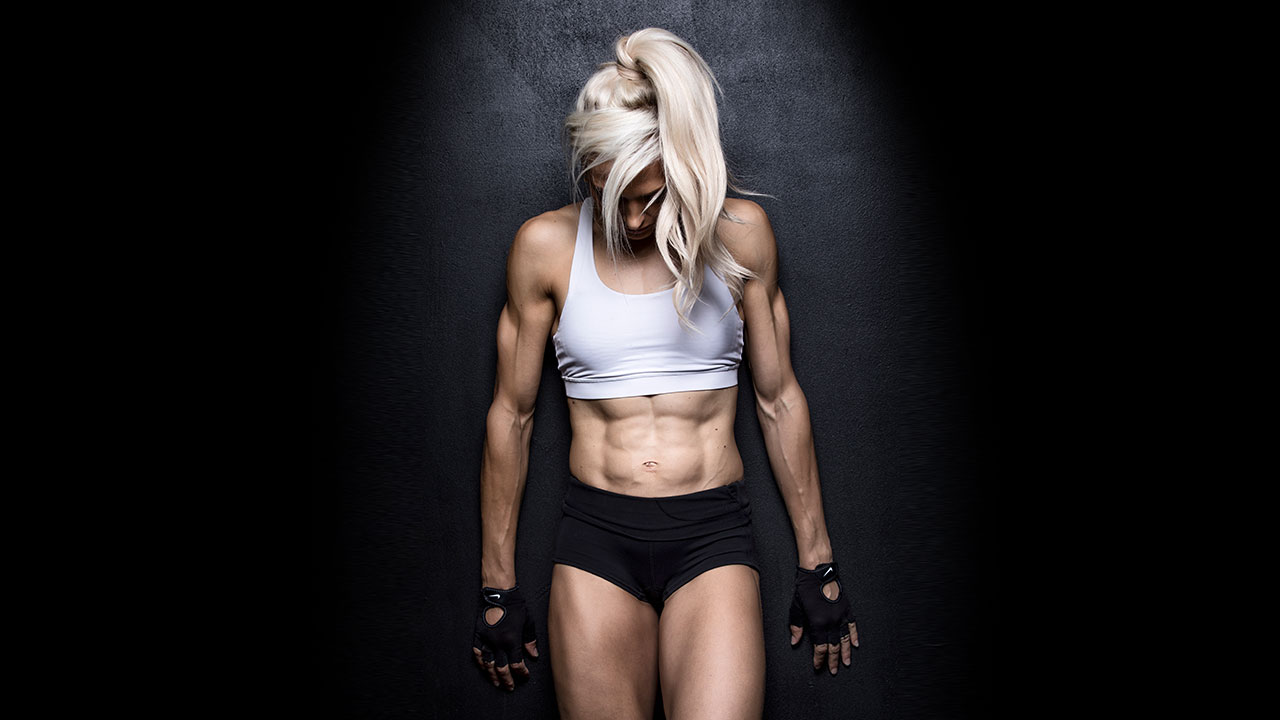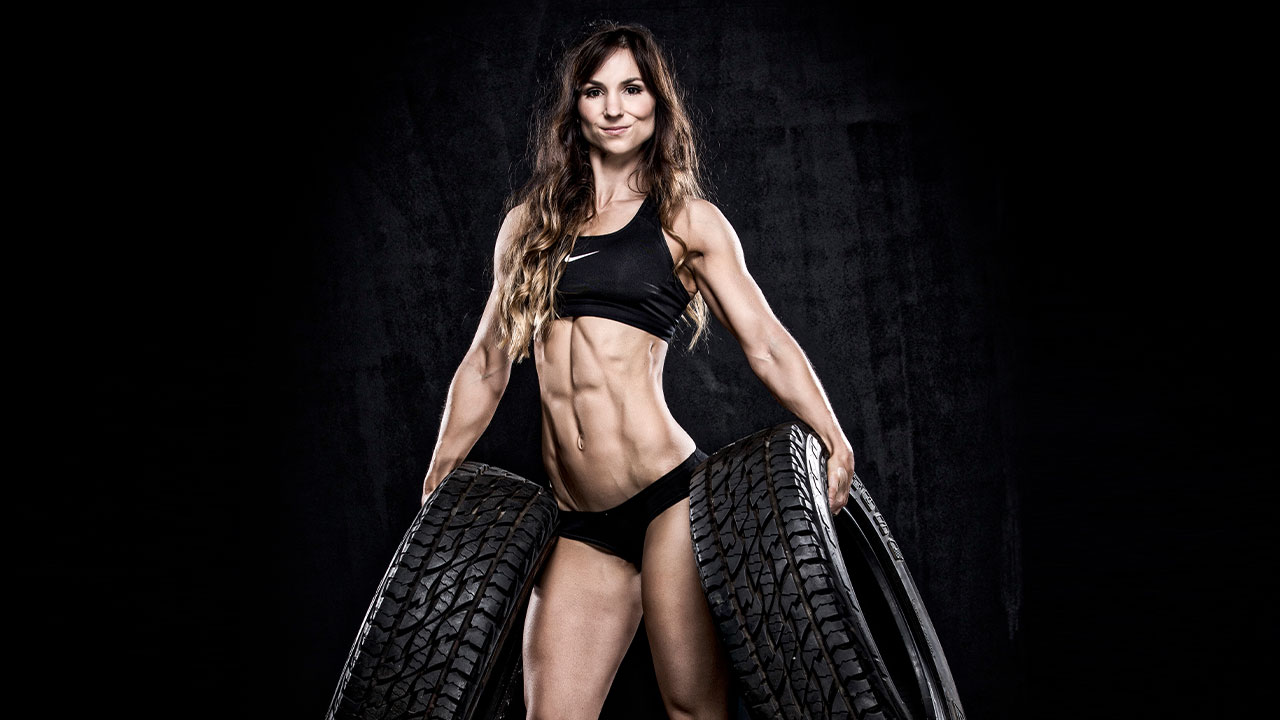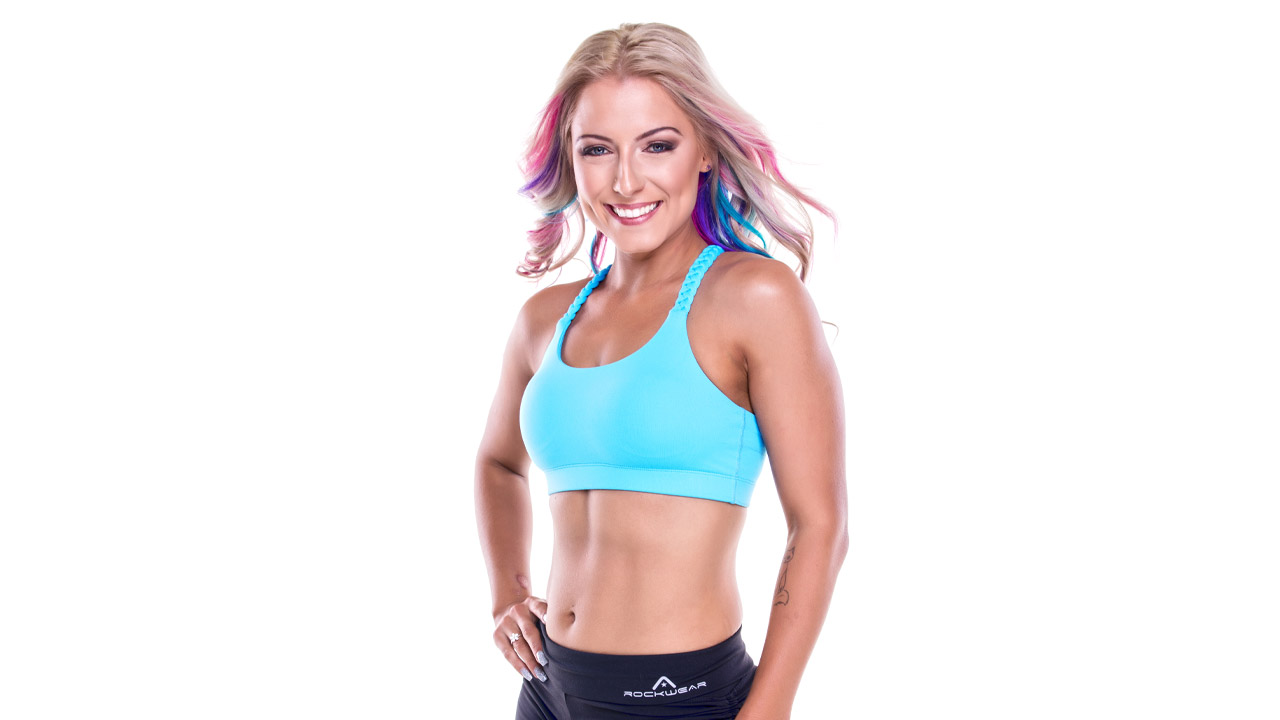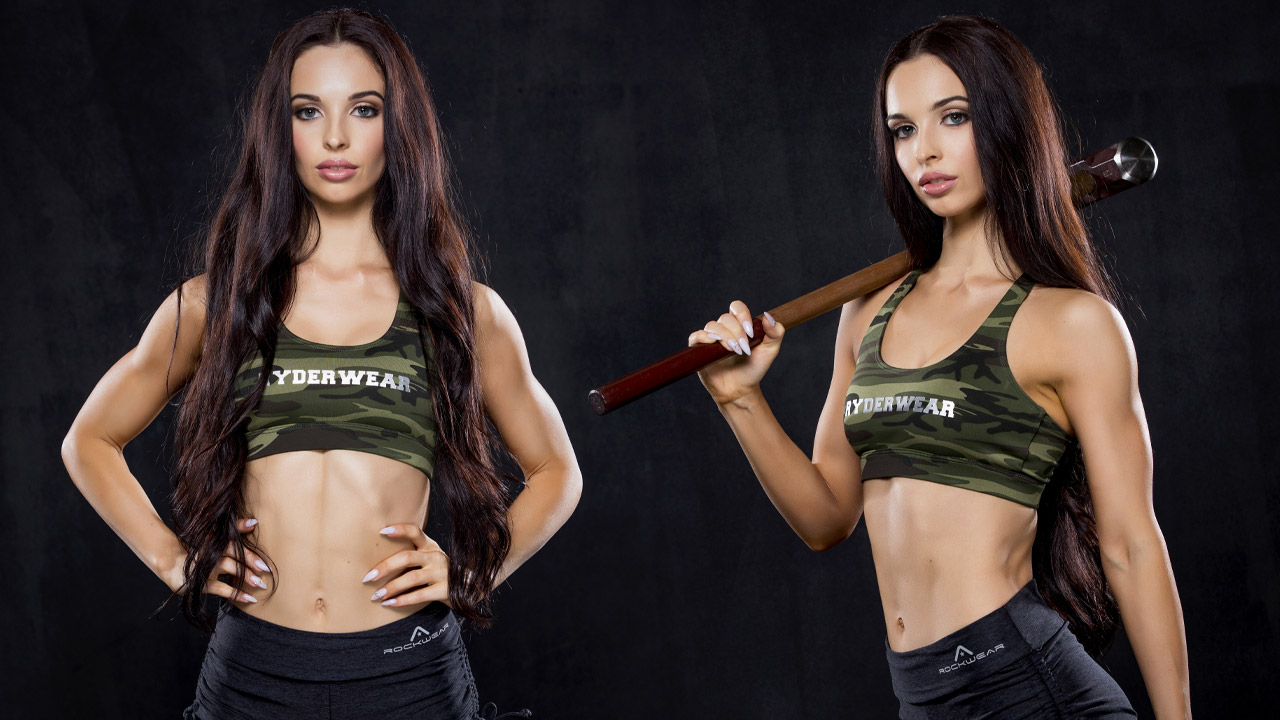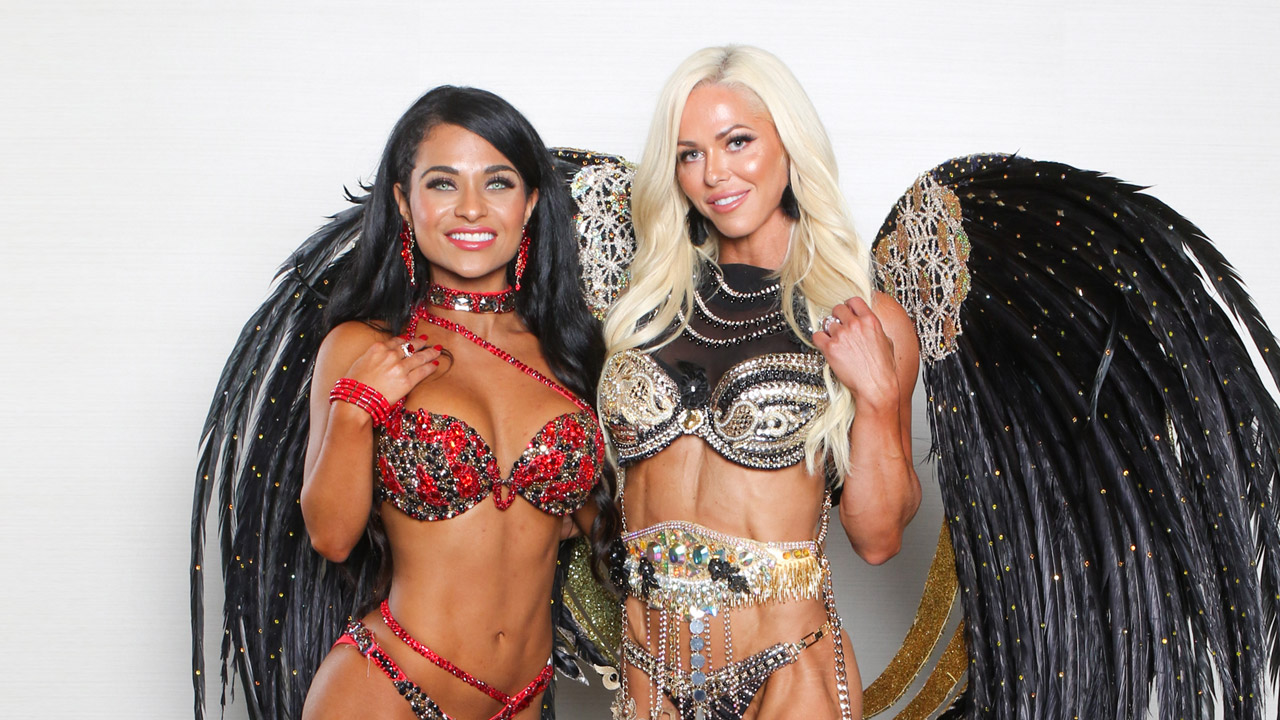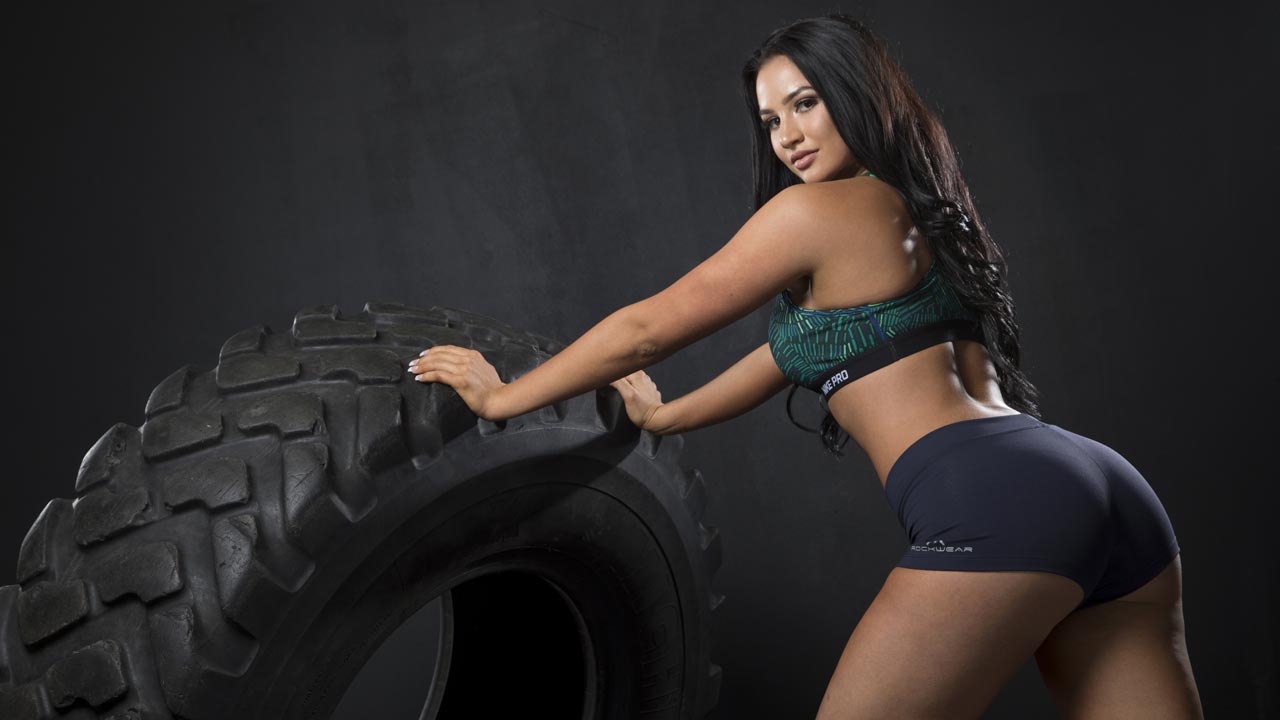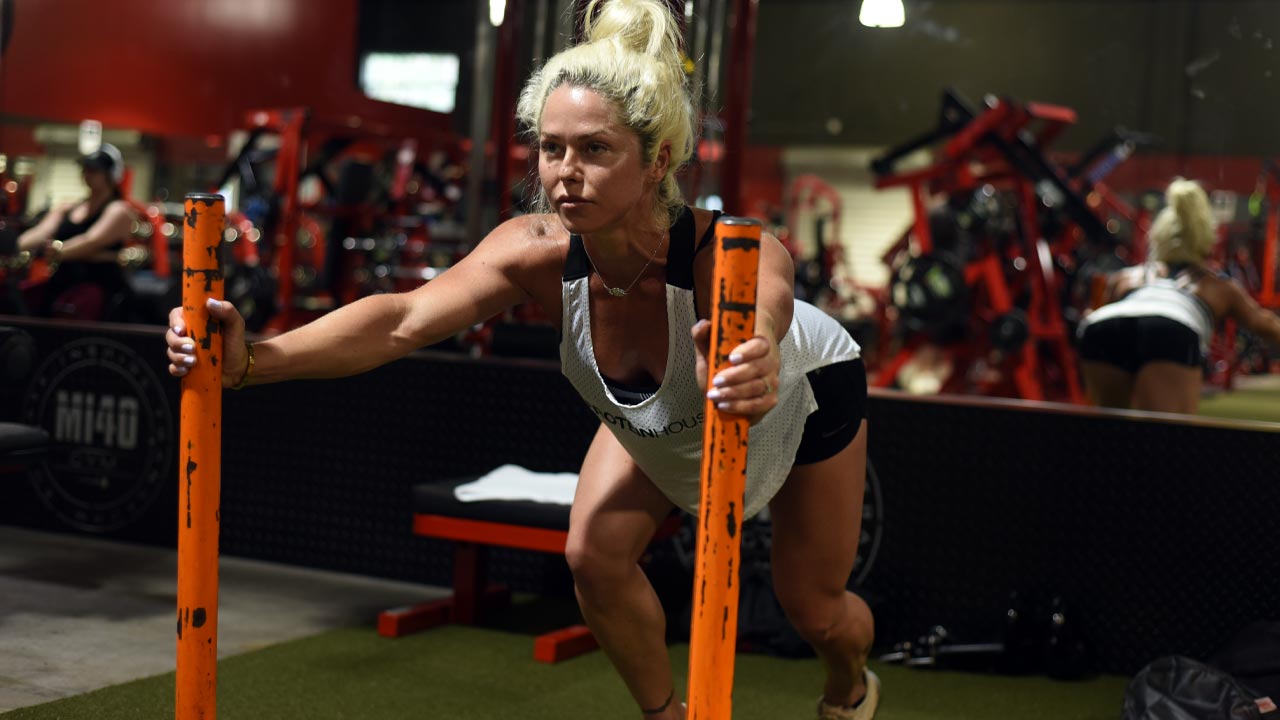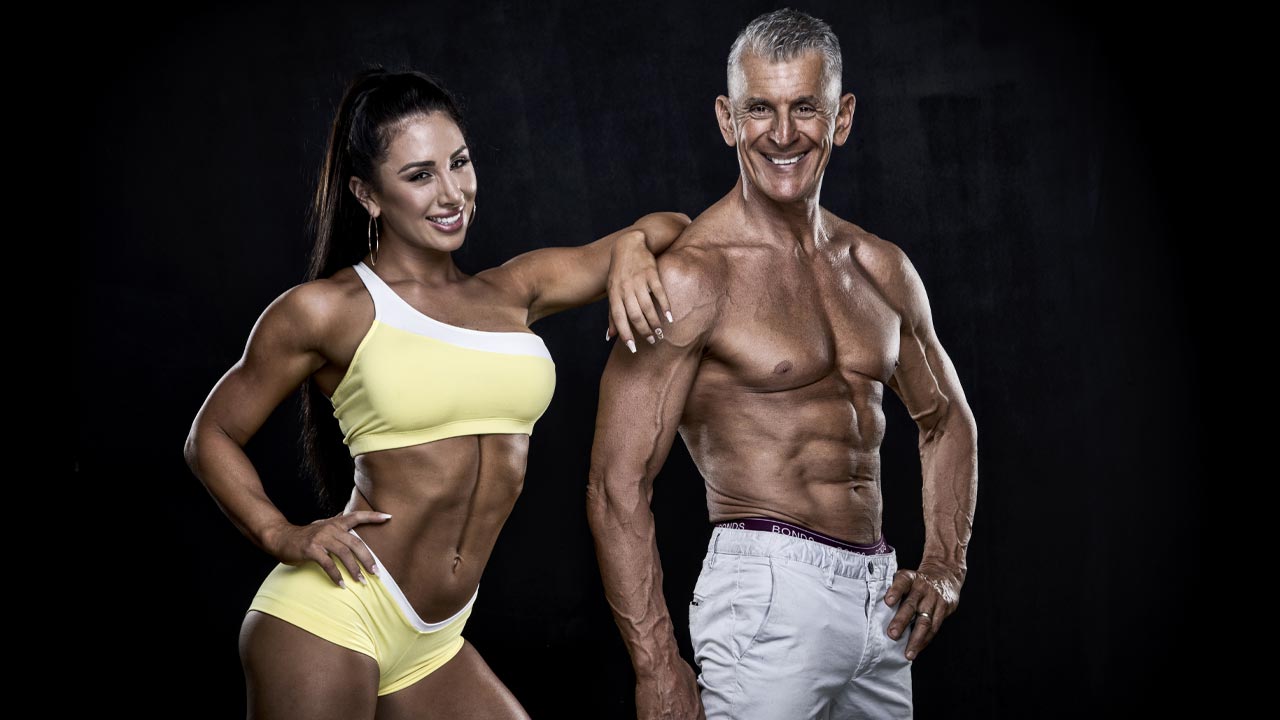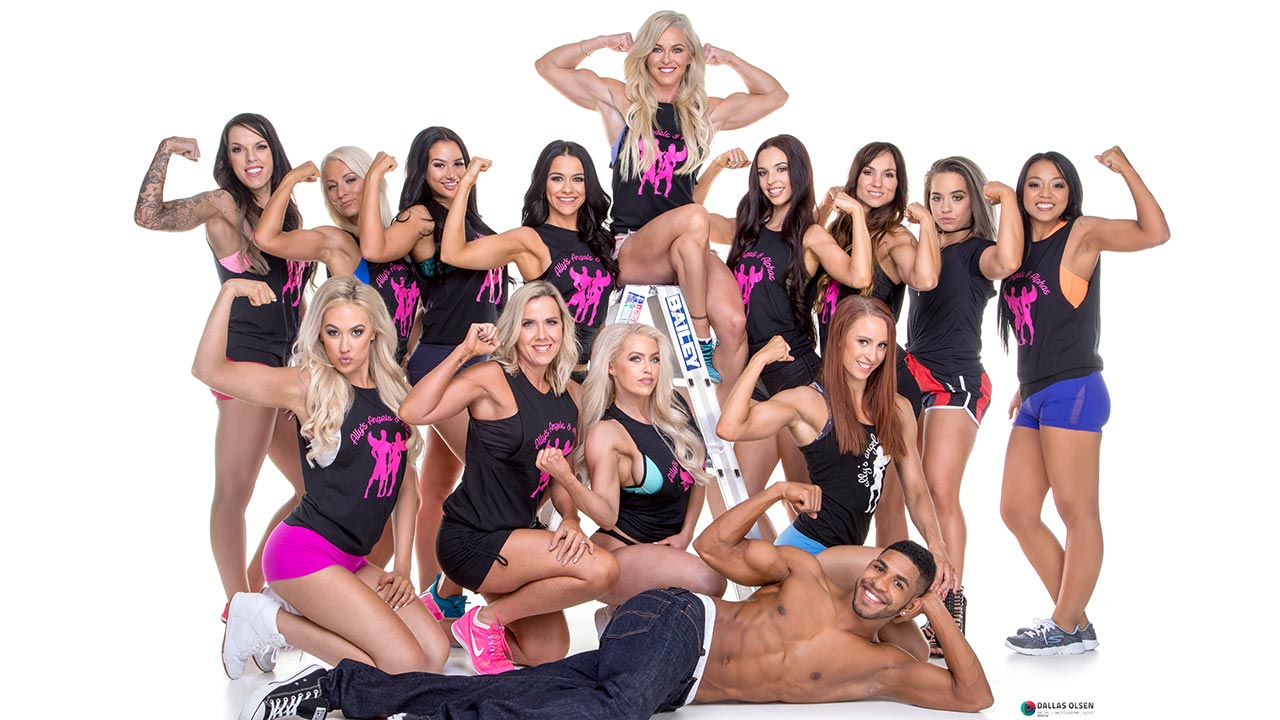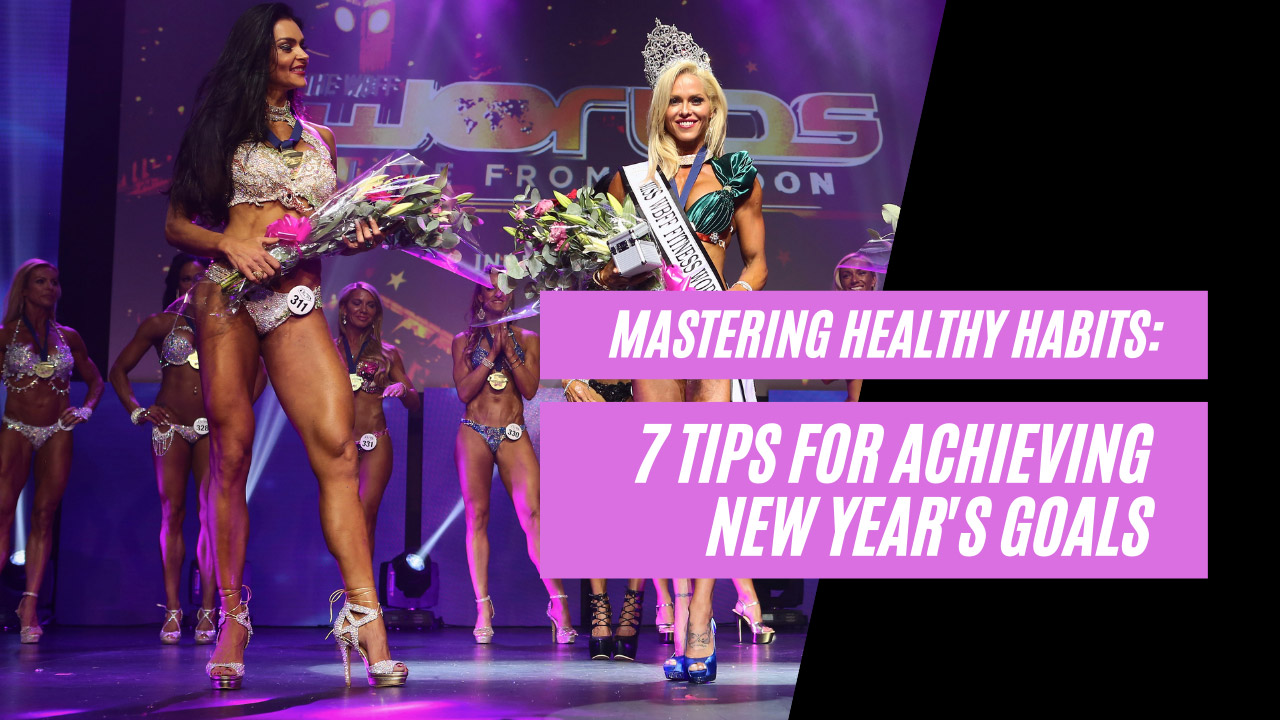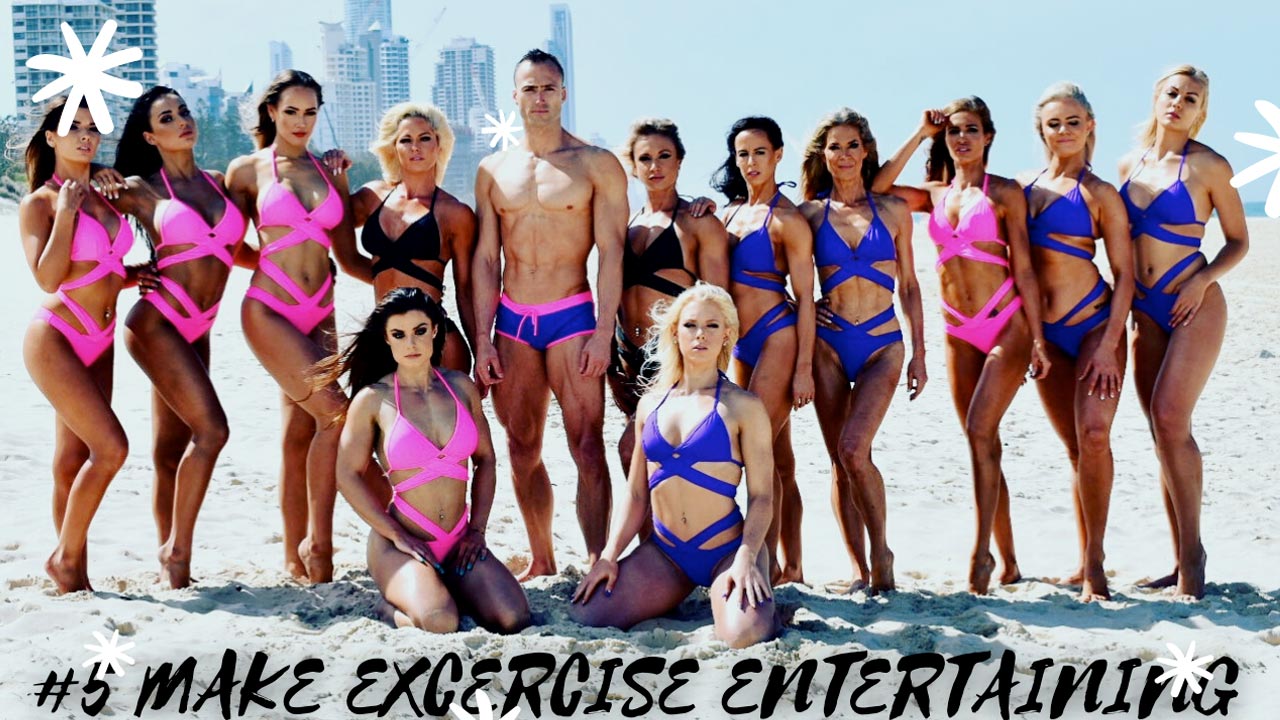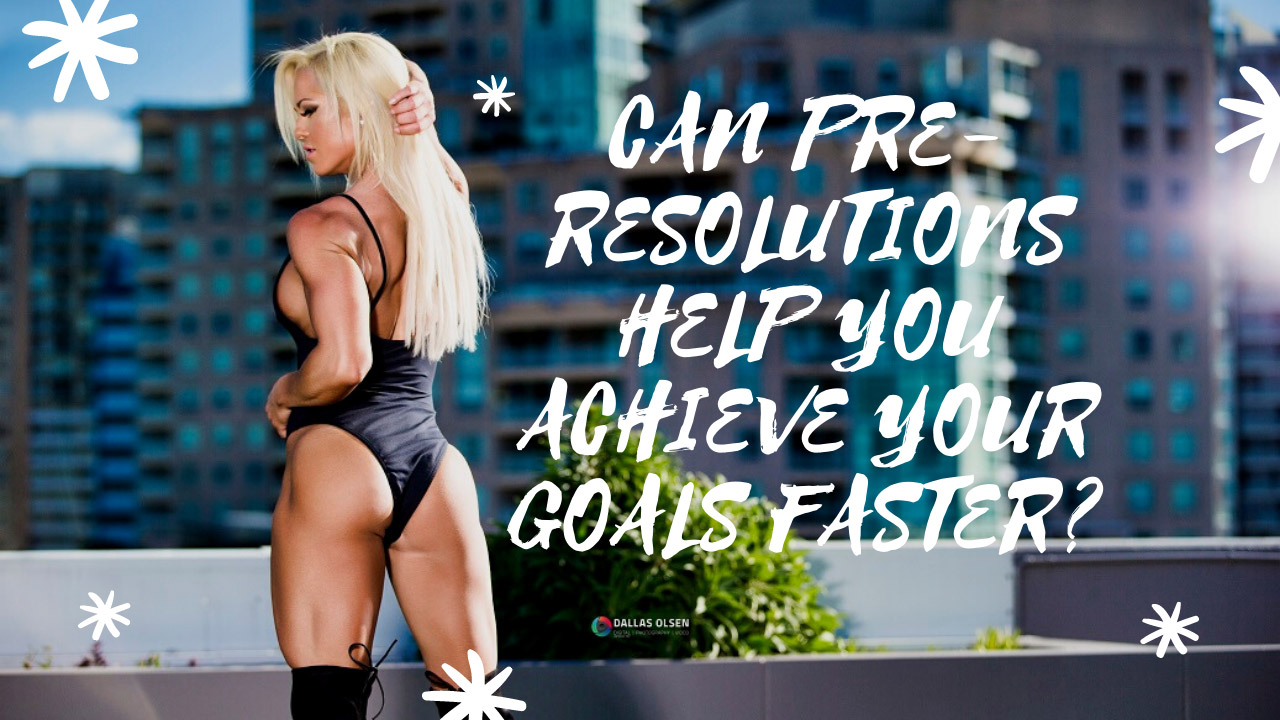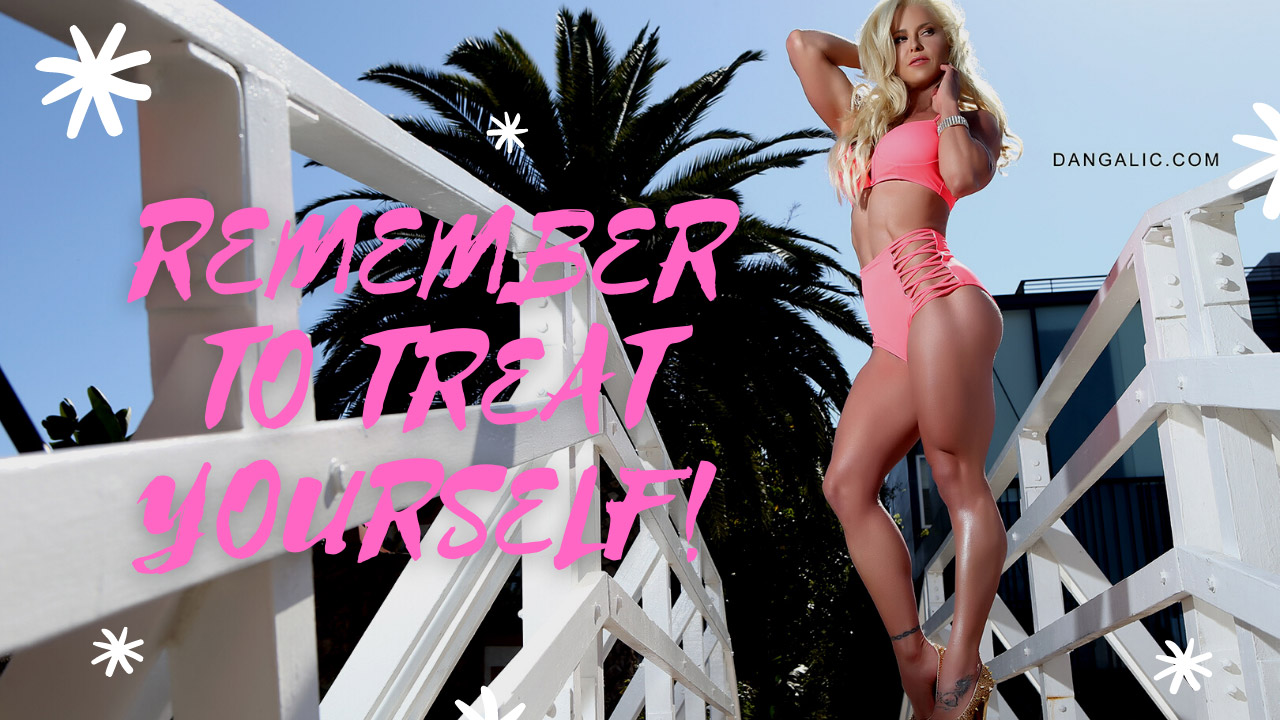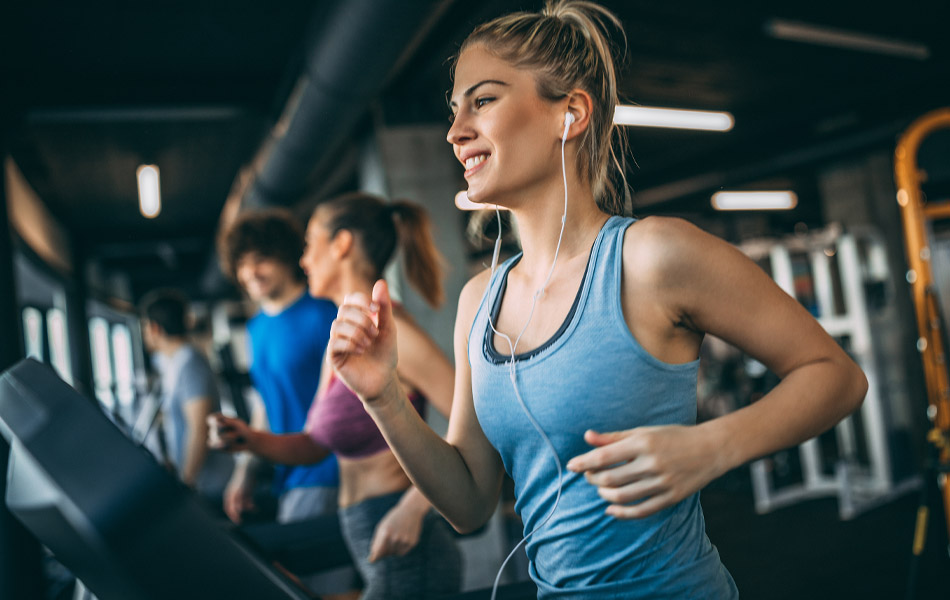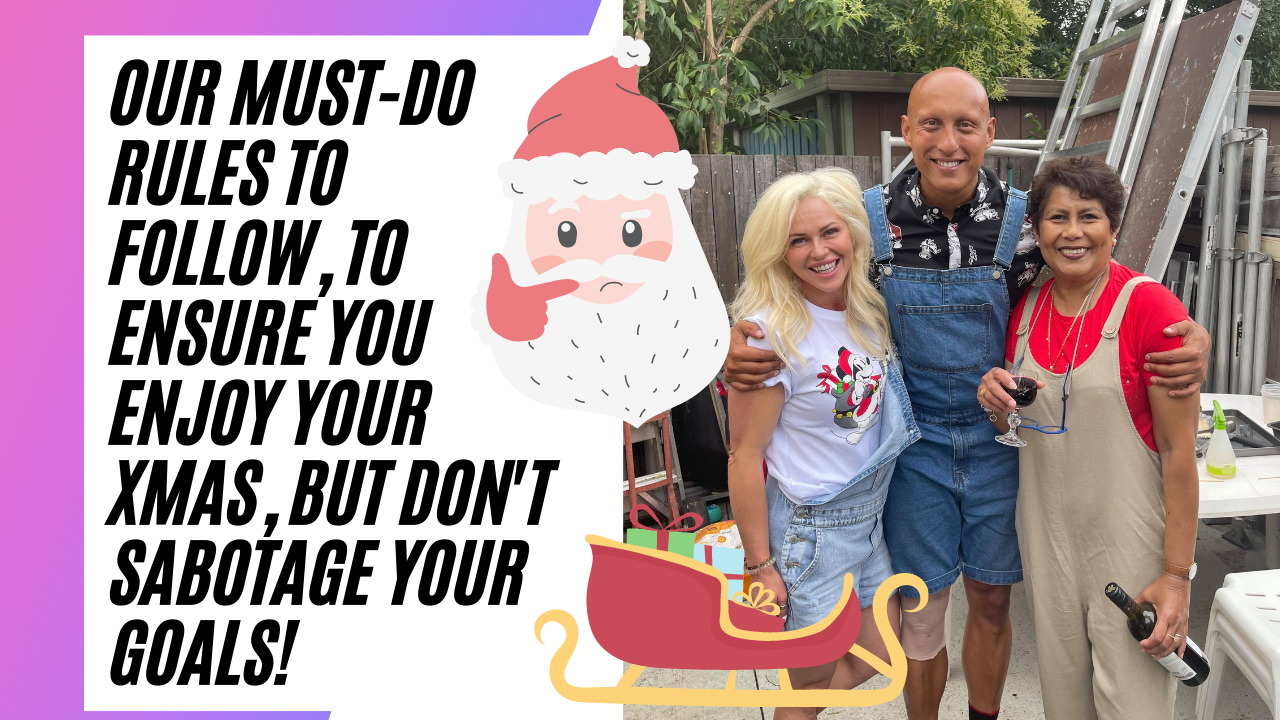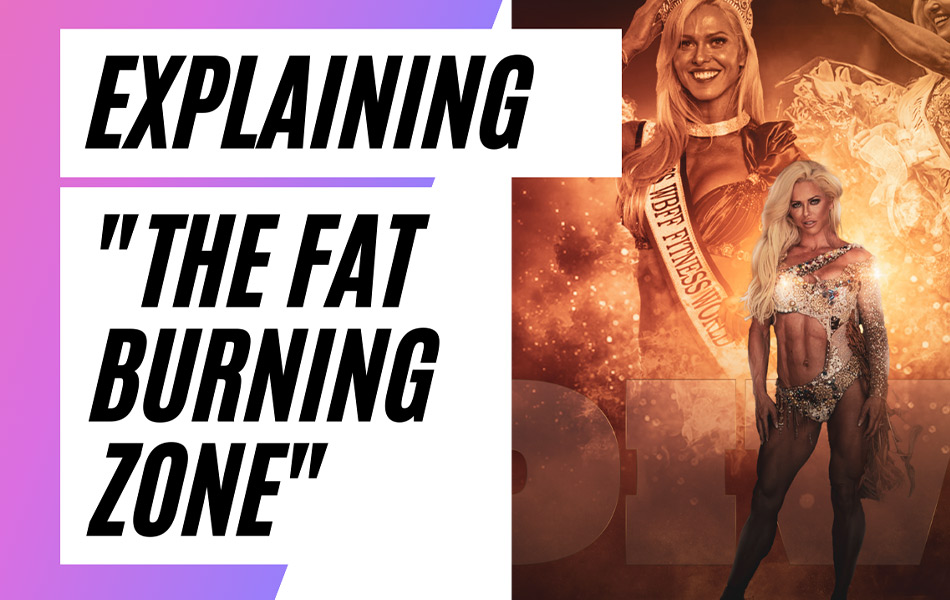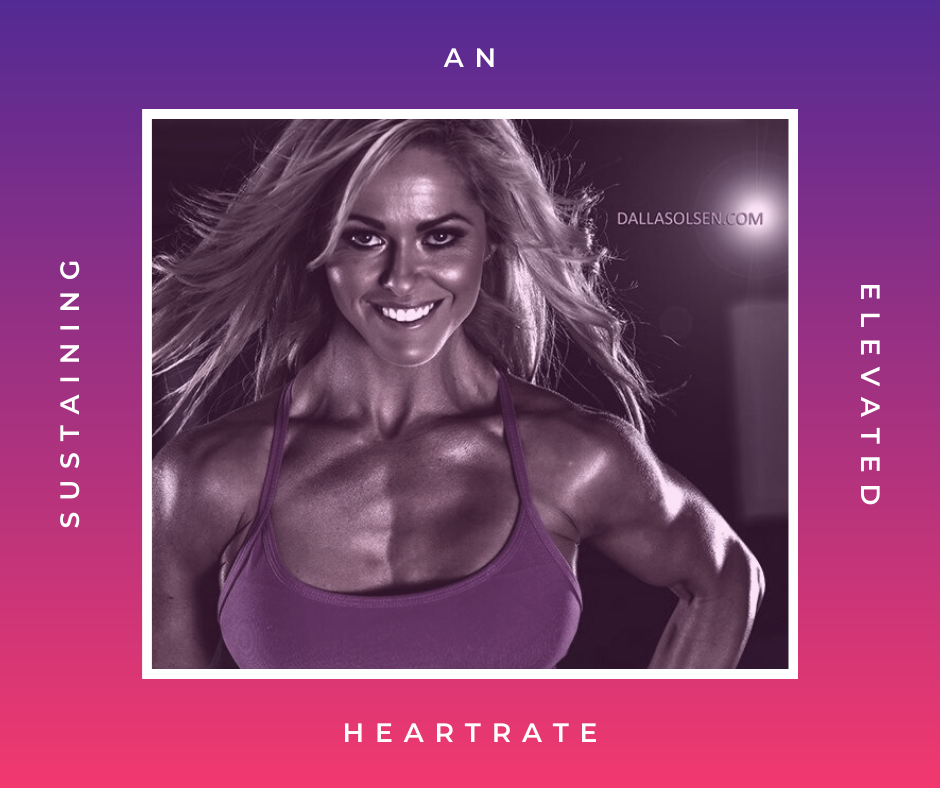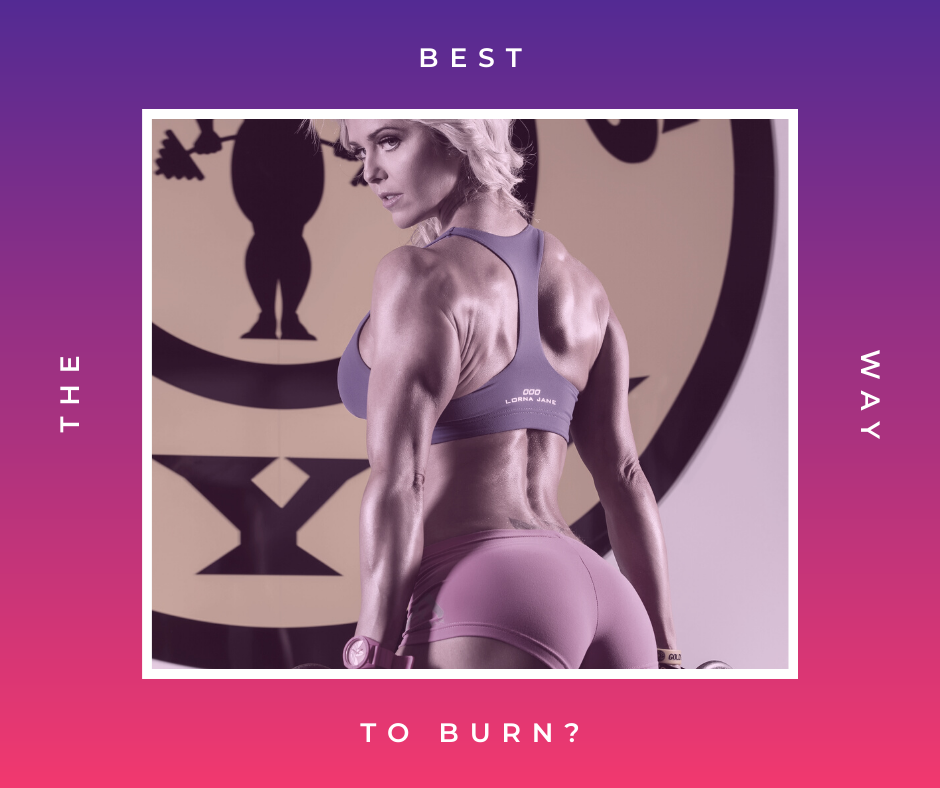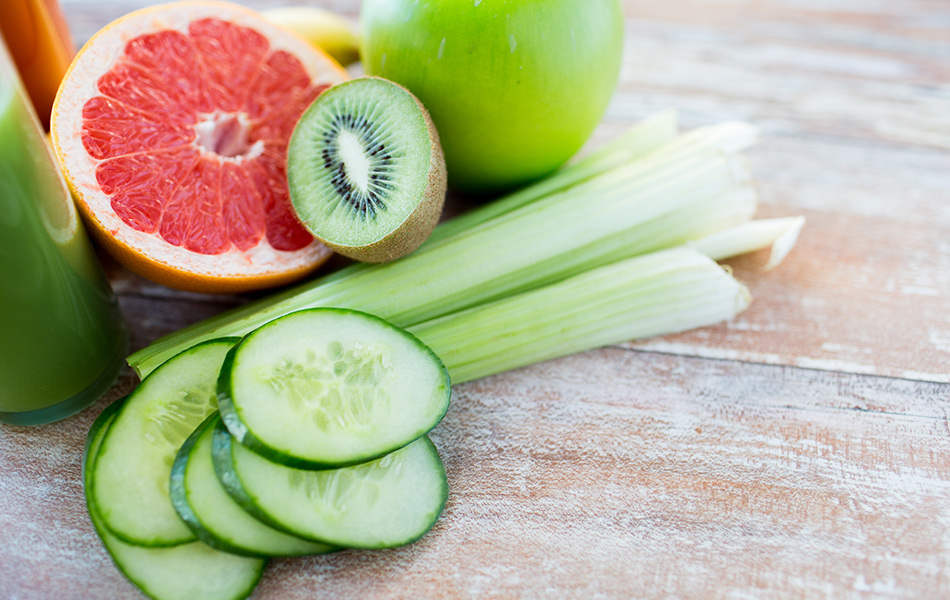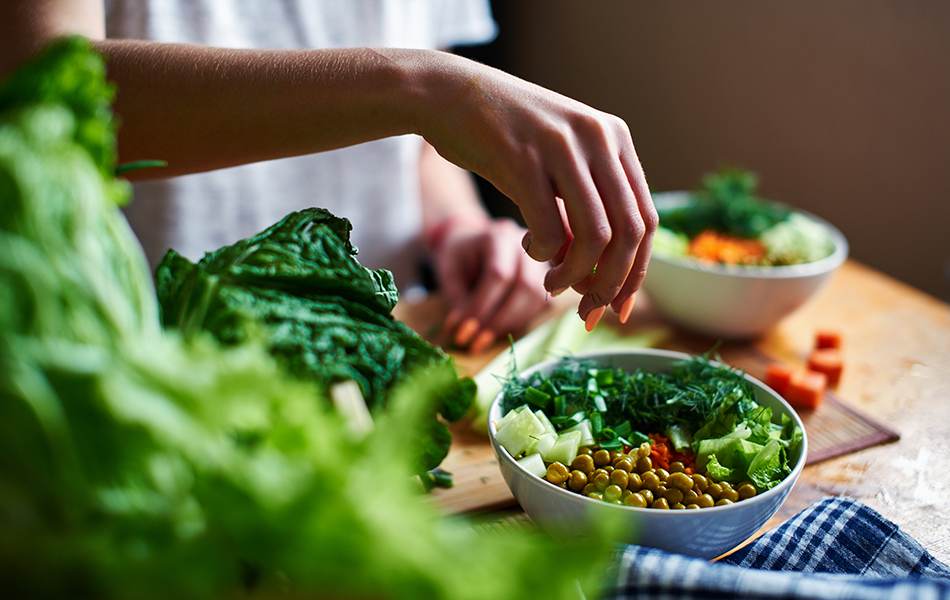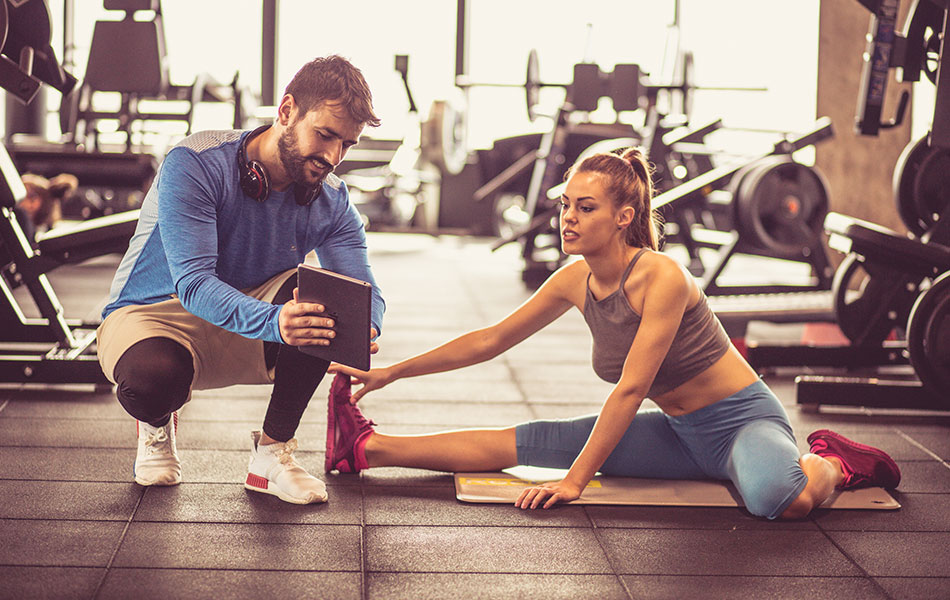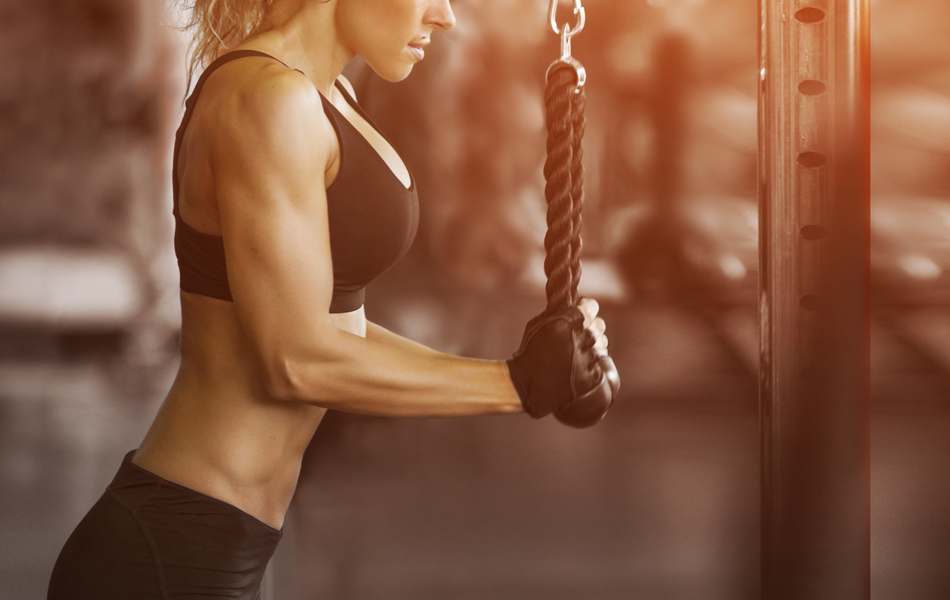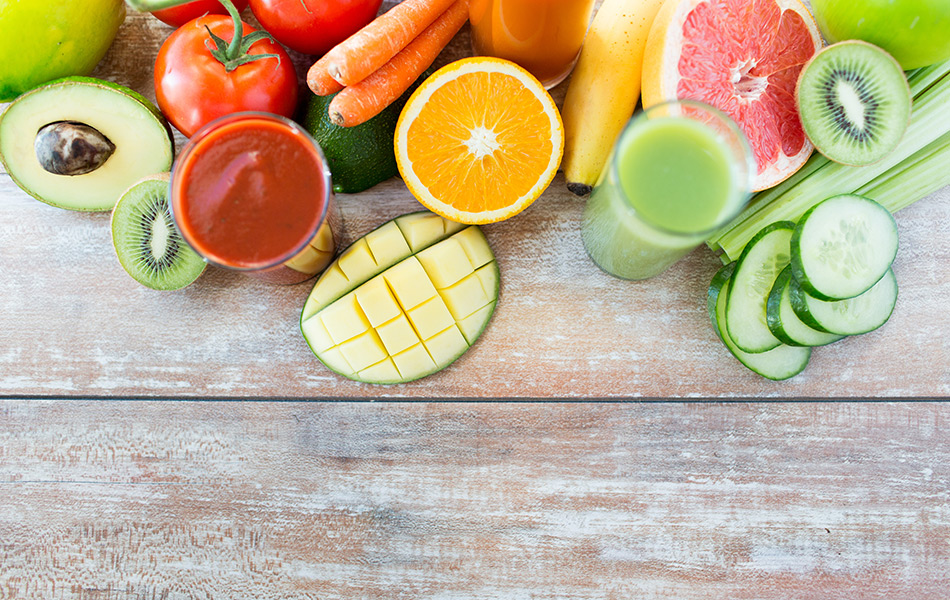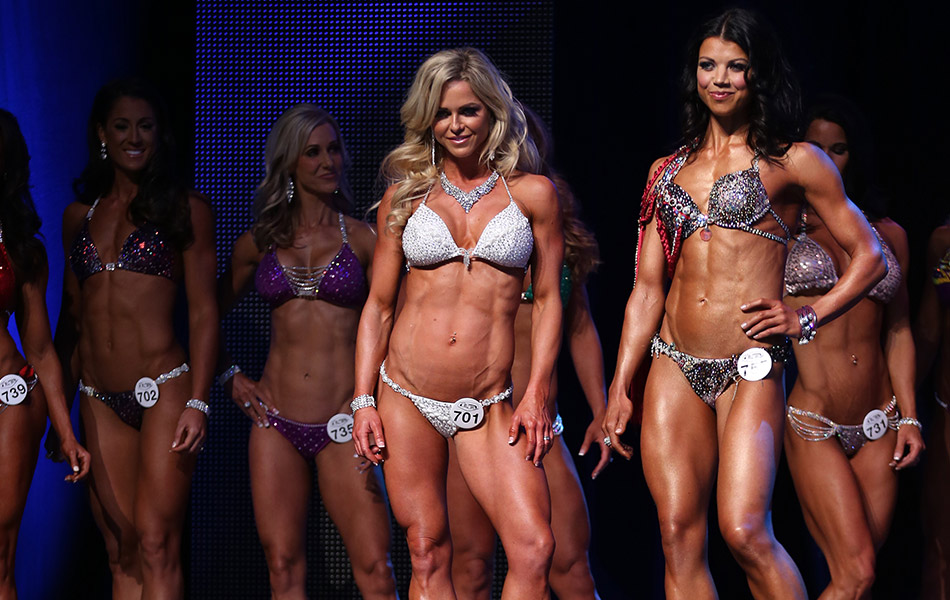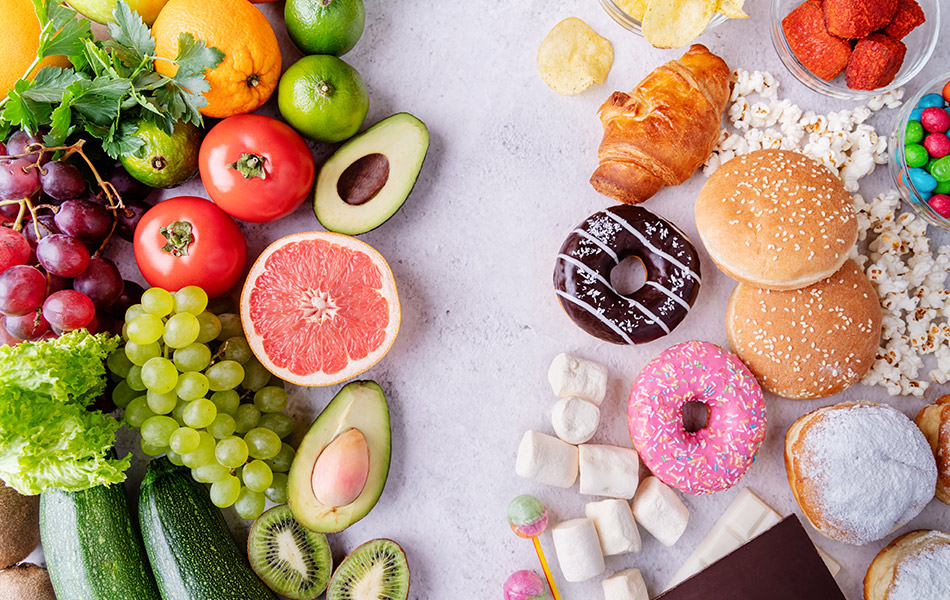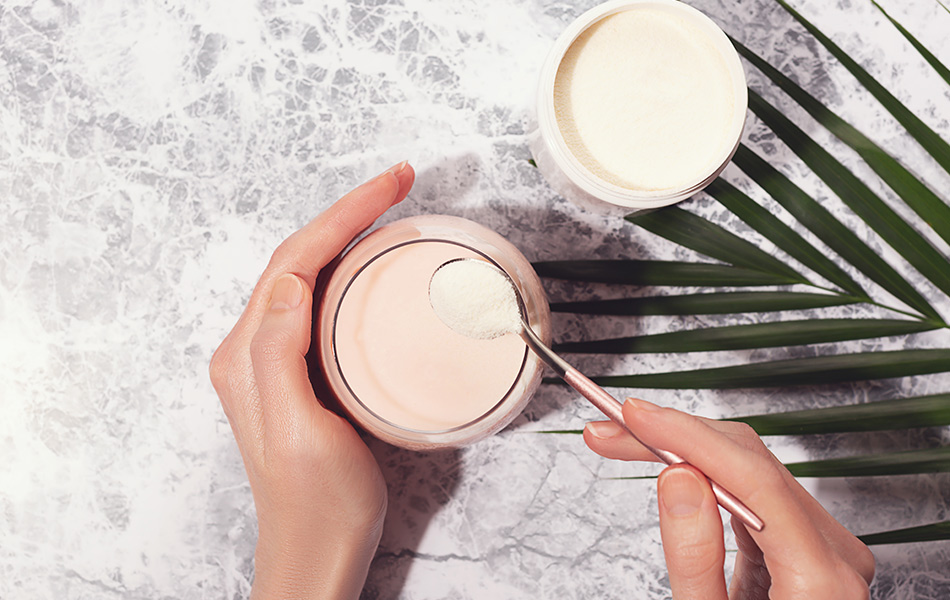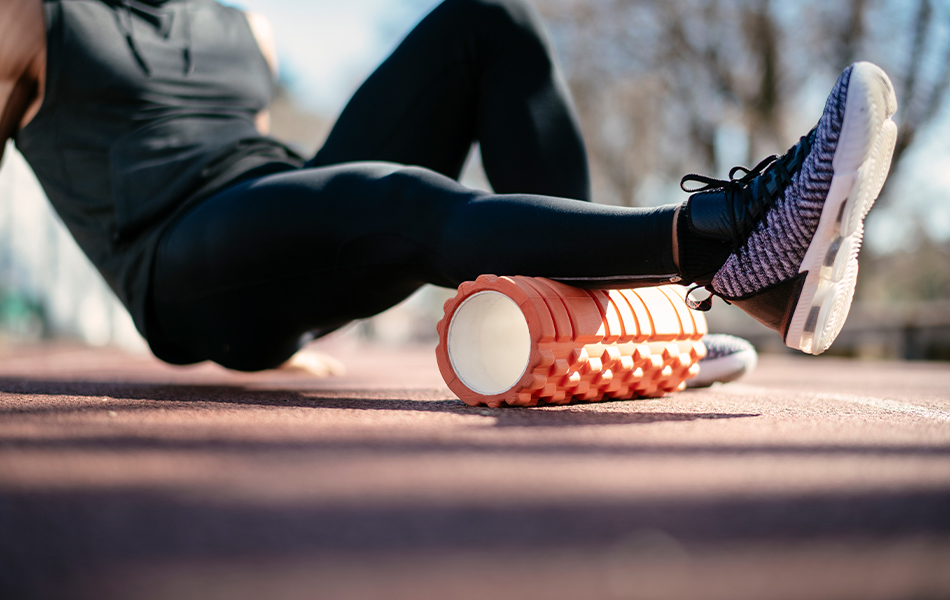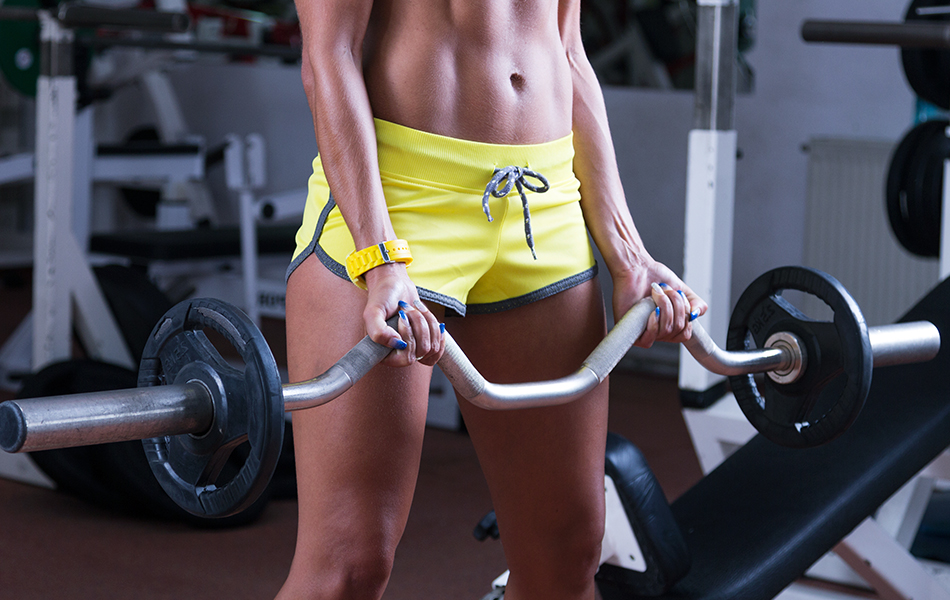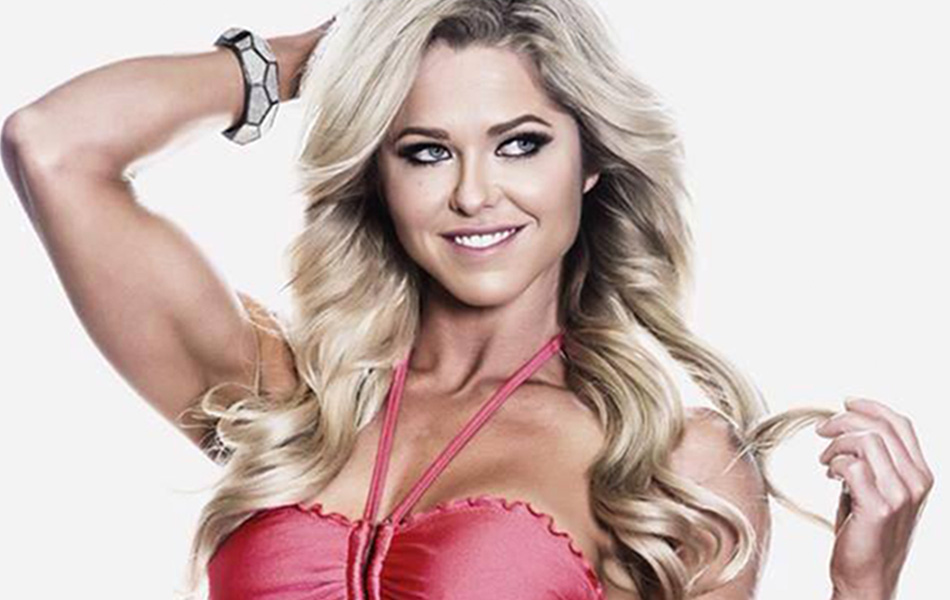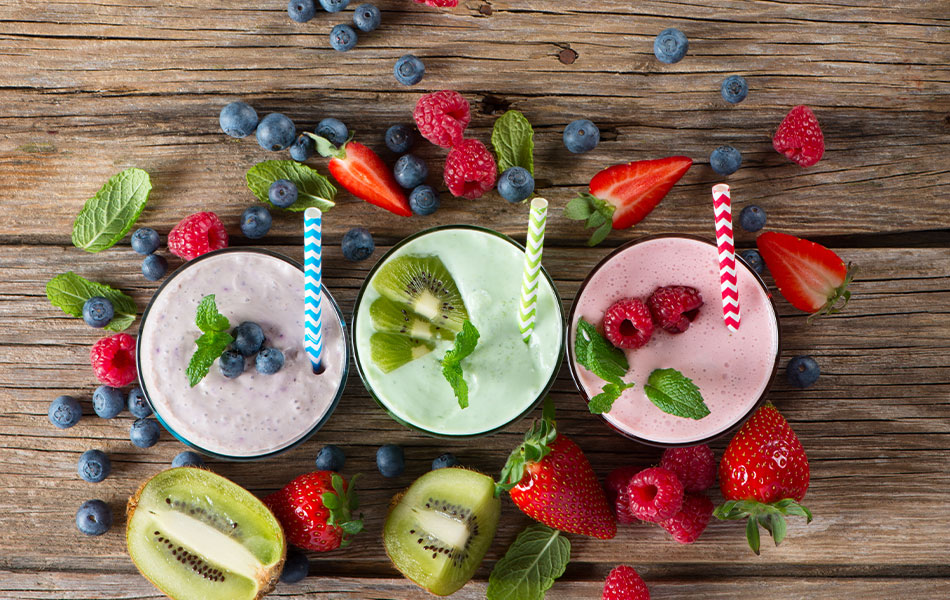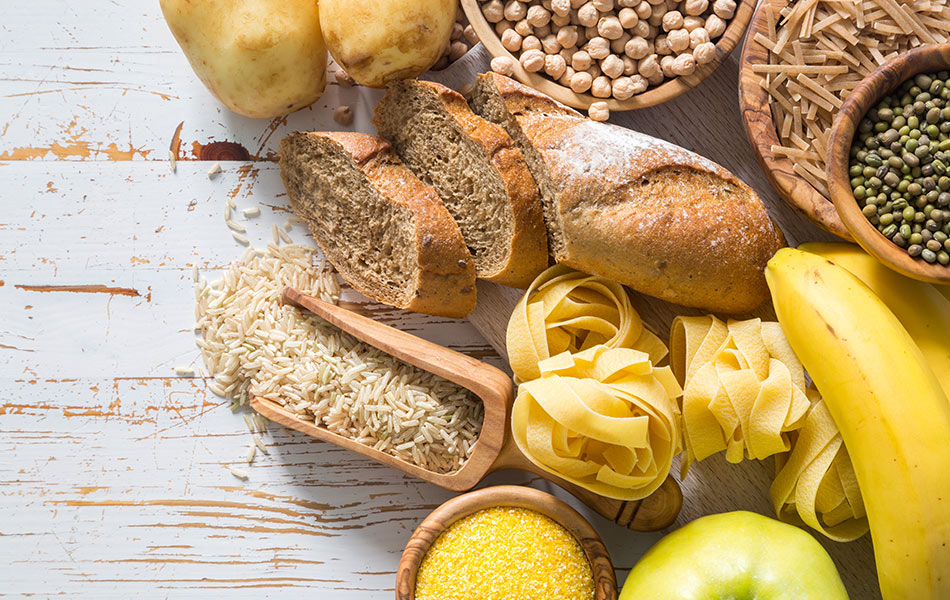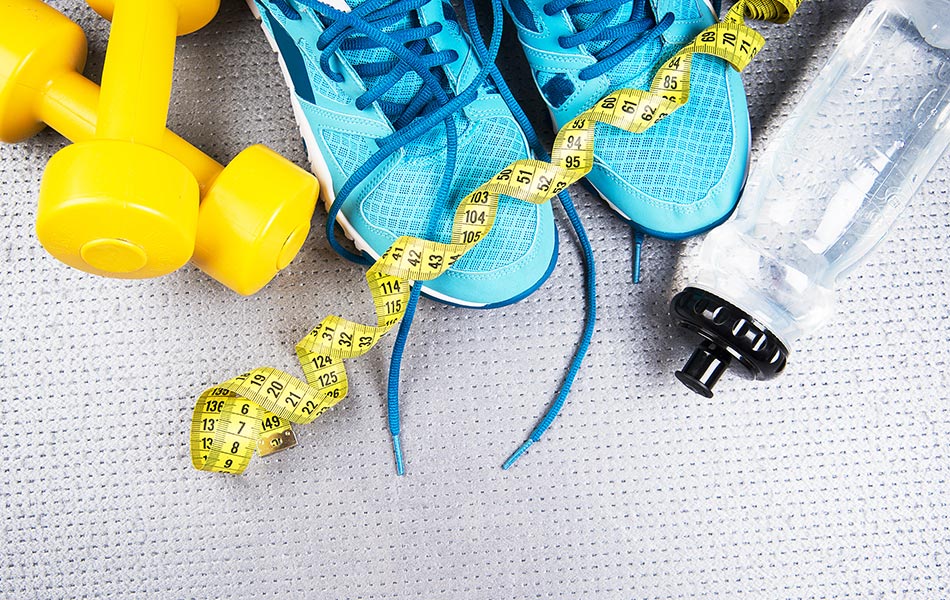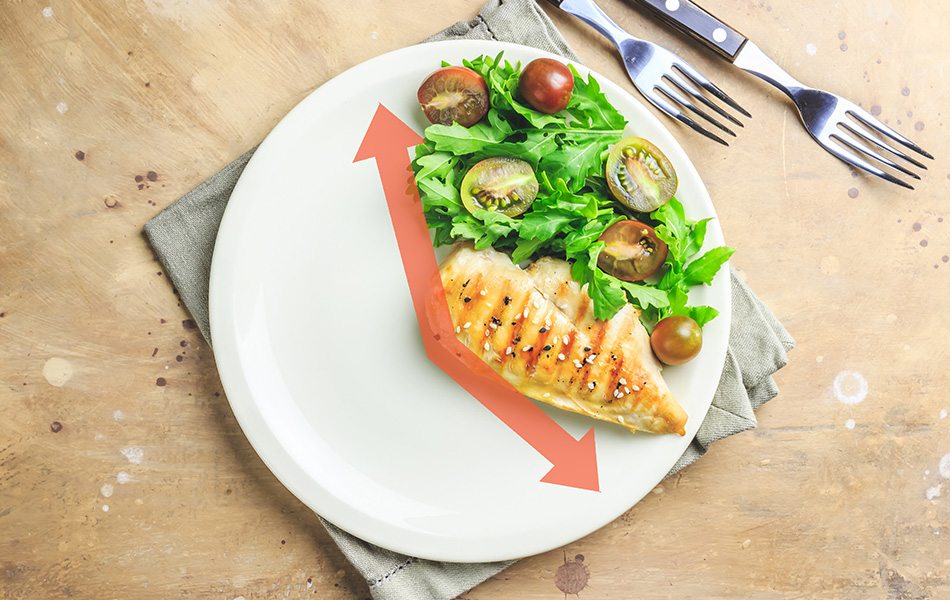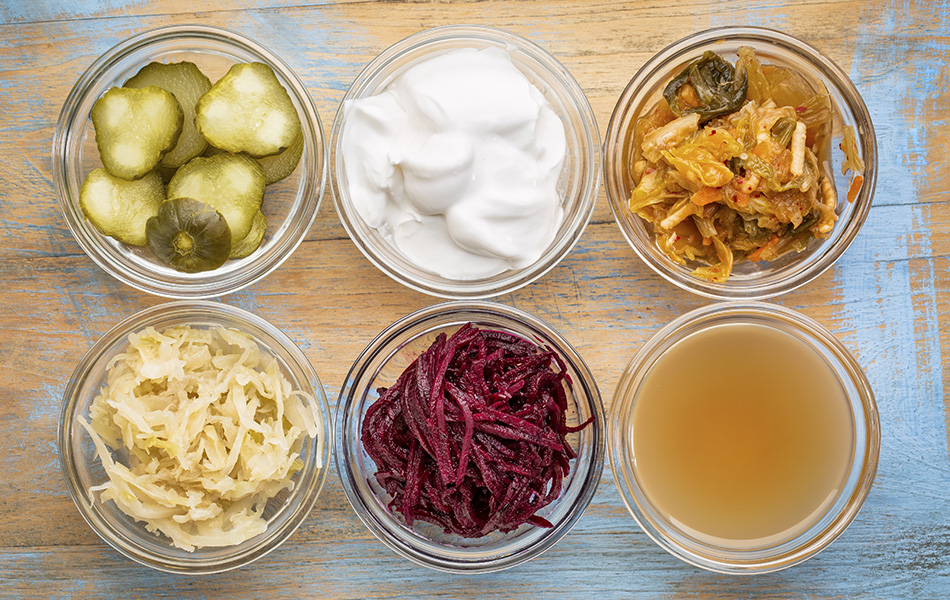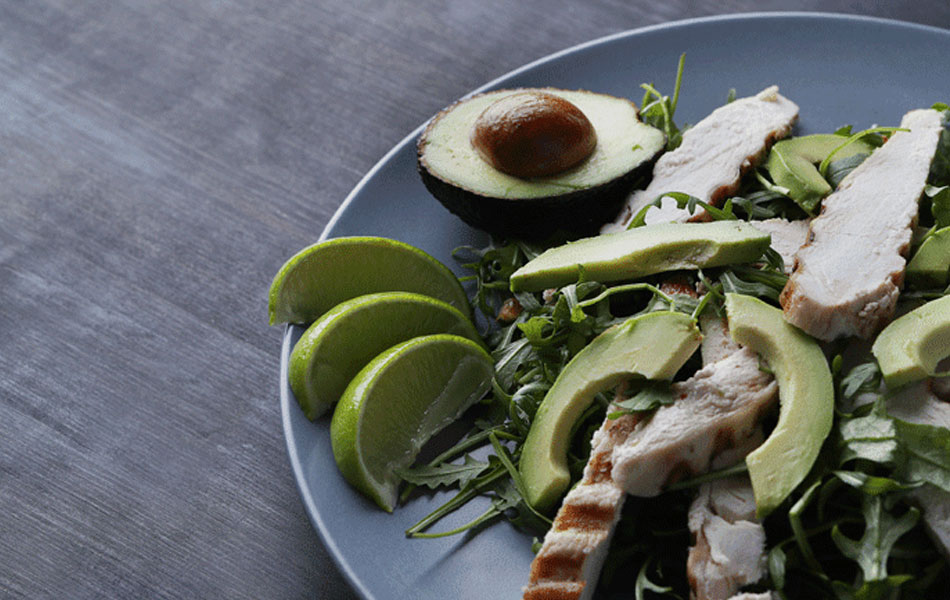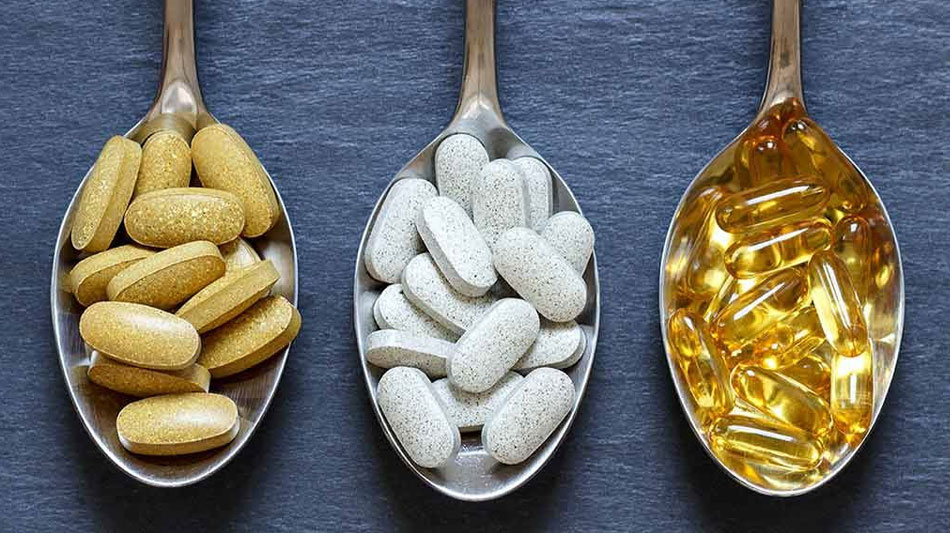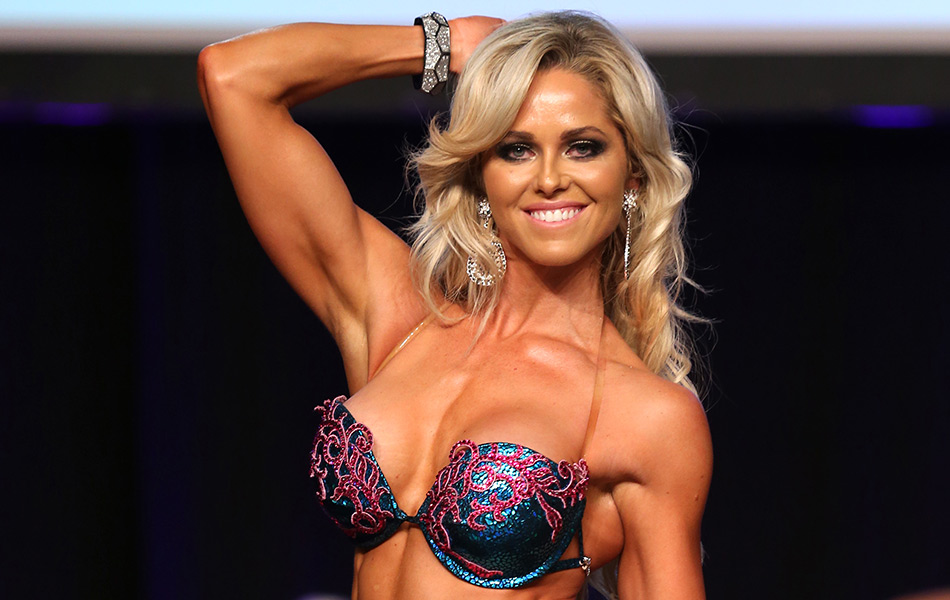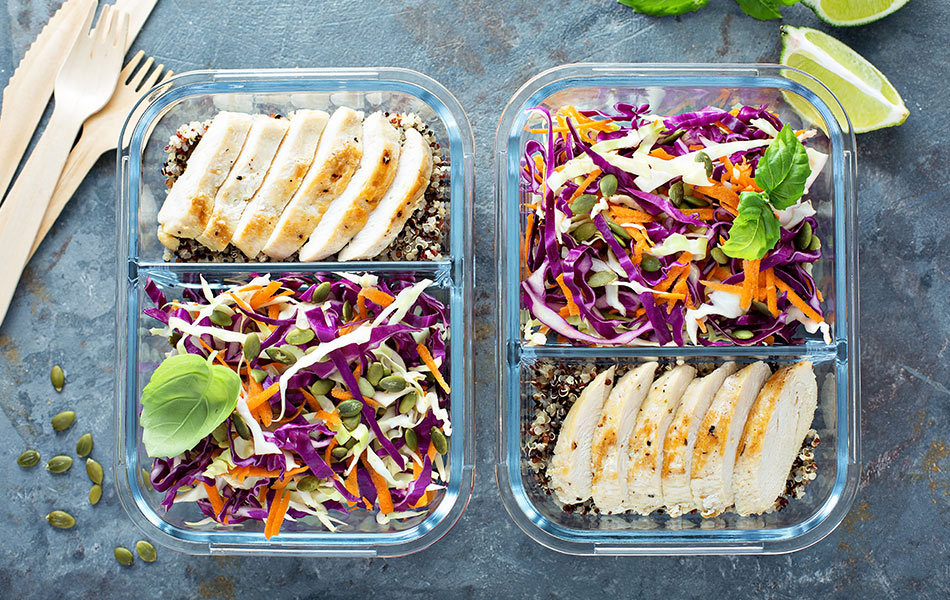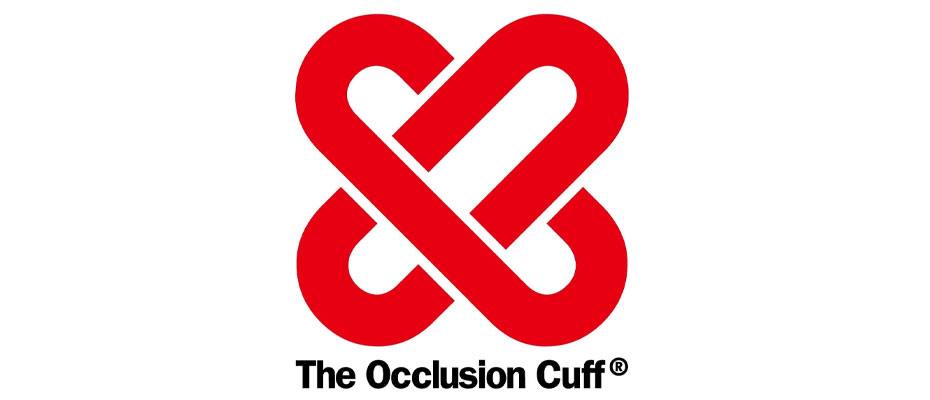In this article, you’re going to learn about the different organizations and competitions in the bodybuilding/modeling world.
You’re going to learn about…
- The WBFF
- The NPC
- The ICN
- The NABBA
- The IFBB
- The ANB
Whether you’re a gym-goer looking to learn more about the different bodybuilding organizations, or an athlete interested in learning more about how competitive bodybuilding works in the real world, this article is for you.
You’re going to learn everything there is to know about how these organizations were created, what their goals are, the differences in their rules and regulations, and the various categories of athletes that they’re looking to promote and work with.
Let’s get started.
WBFF
WBFF stands for world beauty fitness and fashion. The professional athlete, Paul Dillett, found the organization. It’s one of the few bodybuilding organizations created by a professional athlete. They aim to become an industry leader by providing competitors with marketing opportunities to grow as athletes. The goal of WBFF is to merge music, fashion, beauty, and fitness.
Not only that, but they want to support their partners to promote health, fashion, and entertainment. The WBFF seeks to raise the standards in the industry by being professional and honest. They are not just a fitness organization – they view themselves as a brand that wants to support their athletes to reach the next level in the sport of bodybuilding.
The WBFF uses its connections with different partners to provide each of its athletes with sponsorship and other marketing opportunities. Their events are of the most well-produced shows in the fitness industry.
Male Categories
Male Fitness Model
The Men’s fitness model category is for men who display an athletic and defined physique without having as much muscle as a muscle model. Every competitor has to wear square-cut shorts that can be plain or patterned.
Muscle Model
This category is for athletes who appear too muscular to be a fitness model, but don’t generally participate in bodybuilding. The judges are looking for overall physique, symmetry as well as muscle definition, and conditioning. Competitors can crossover to the Male Fitness category if they want.
Transformation Division
This division is for people who are making their way to a healthier lifestyle. They may not be ready for more advanced division, but they can show the world how much they have improved. To participate, you’ll need three before and after photos, as well as a short bio explaining your personal journey.
Female Categories
Diva Figure Model
The Diva Figure Model competition is for those women who have more muscle and definition than diva bikini or fitness competitors. Judges are looking for marketability, incredible physique, and excellent stage presence.
Diva Wellness
Here, the competitors should have more developed lower body physique. The focus of this competition is on the muscle and tone of the body. The judges are looking for overall beauty as well as marketability.
Diva Bikini Model
The Diva Bikini Model is a beauty contest for women who appear slightly muscular and have an excellent tone definition. Judges are looking for a more developed body physique. The focus is on the shape and tone of the body as well as overall beauty and marketability.
Diva Fitness Model
This category is for female athletes who have more muscle tone and definition than those participating in the Diva Bikini Model. Judges are looking for athletic physiques, excellent marketability, and a confident stage presence.
Commercial Models
The competitors should be between the ages of 17 to 45 to participate. It’s a very specialized branch of modeling, but it’s incredibly lucrative. Here, the judges are looking for beauty and marketability, as the winners will pose for some of the world’s biggest magazines.
Rules:
- All competitors have to use the official WBFF Beauty Service as well as the official WBFF tanning service if they want to participate.
- The models should wear shoes that compliment them and that are in line with the WBFF brand. The WBFF no longer allows clear stilettos.
- To compete in any WBFF category, you need to be at least 18 years of age.
- For the Diva Bikini Model category, there is an over 35 years class.
- Contestants shouldn’t invite guests backstage.
- No alcohol is allowed at the shows.
- If you’re competing for the first time, you should attend the WBFF amateur competition.
- No previous experience is required to participate in a WBFF competition.
- All props and costumes have to be approved by the WBFF before the competition.
NPC
NPC, or the National Physique Committee, is the most well-known physique organization in the world, created in 1982. In this competition, the athletes in bodybuilding, fitness, figure, bikini, and physique can participate as long as they are members of the organization.
It’s the primary amateur organization in the world, and many of its successful athletes attend professional IFBB events later on in their careers. NPC’s athletes frequently appear in different magazines like Muscle & Fitness, Muscular Development, and others.
Their most popular divisions are the Men’s physique and Women’s bikini fitness. The competitors in these categories can appear in various magazines and marketing campaigns. The NPC competitions are not hardcore bodybuilding contests but rather an amateur competition where they celebrate each of their athletes’ achievements. They organize thousands of live events, and they are frequent appearances of celebrity hosts like Dwayne “The Rock” Johnson.
Male Categories
Men’s Classic Physique
The competitors should have a nice muscular physique as well as symmetry. Judges are looking for marketability and excellent stage presence. Competitors shouldn’t be as bulky as other categories, but they still have to display strong muscle development.
Men’s Physique
Competitors should have proper shape and symmetry as well as excellent musculature and overall condition. However, this is not a bodybuilding competition. Judges are looking to see the confidence and personality of each competitor when posing. They have to display their bodies uniquely and creatively.
Here are the weight classes for male competitors:
- Bantamweight – up to 143 ¼ lbs.
- Lightweight – over 143 ¼ lbs up to 154 ¼ lbs.
- Middleweight – over 154 ¼ lbs up to 176 ¼ lbs.
- Light-Heavyweight – over 176 ¼ lbs up to 198 ¼ lbs.
- Heavyweight – over 198 ¼ lbs up to 225 ¼ lbs.
- Super Heavyweight – over 225 ¼ lbs.
Female Categories
Women’s Physique
Competitors have to show musculature as well as overall symmetry. They should have a balance between the upper and lower body. Judges are looking for marketability as well as stage presence and confidence. The athletes have to present themselves in a muscular and yet feminine way.
Bikini
Here, the judges look for musculature that displays the female body in a sexy and feminine way. They need to have full round glutes with a slight separation between the hamstrings and the glutes. Competitors should have overall symmetry and excellent body shape, as well as marketability and great stage presence.
Figure
Competitors should have an excellent V shape figure that has a small degree of muscle definition. They also have to display excellent condition. Judges are looking for overall symmetry and balance that shows the beauty of each contestant.
Wellness
This competition is for female athletes that want to show more body mass in their hips, glutes, and thighs. They should have a developed upper body but not as much as their lower body. This division is all about displaying the most beautiful parts of the female body without demonstrating any imbalances.
Here are the different weight classes for female competitors:
- Lightweight – up to 115 lbs.
- Middleweight – over 115 lbs up to 125 lbs.
- Light-Heavyweight – over 125 lbs up to 140 lbs.
- Heavyweight – over 140 lbs.
Rules:
- Male competitors have to wear plain in color suits without fringe or wording.
- Female competitors have to wear two-piece posing suits that may have printed design, including fringes, lace, sparkle, or fluorescents.
- All posing suits must be V-shaped without any thongs.
- Each competitor can bring their own music, but it shouldn’t contain any vulgar lyrics.
- Only wedding bands and earrings are allowed. Competitors can’t wear any other jewelry as well as props or gum.
- Competitors must have US citizenship if they want to compete in a US-based NPC contest.
- If they don’t have US citizenship, they must at least have a green card.
- If the competitor is Canadian, they should be a member of the CPA to participate in a competition.
ICN
ICN was created in the 90s with the idea of taking Australian bodybuilding on a world-class level. Nowadays, they run around 40 competitions a year. The ICN is focused not only on running events but on educating young people about the dangers of obesity and unhealthy eating. Not only that, but it focuses on the natural side of bodybuilding.
The organization’s goal is to support natural athletes who want to develop their physique without taking any performance-enhancing drugs. The creator of the organization is Wayne McDonald, who wanted to develop natural bodybuilding in Australia. He organized their first event, known as “The Australian Natural Titles” in 1991, which was a massive success.
The first event in Australia had an Olympic Gold Standard in drug testing, which showed that Wayne is serious about developing natural bodybuilding in Australia. In 1995, Wayne organized the first international bodybuilding event outside the US in Melbourne.
It was the World National Cup, which was another great success. More than three decades later, the ICN remains of the most critical Australian bodybuilding organizations, having eight independent state organizations.
Male Divisions
Fitness Model
Here, competitors have to present themselves professionally as a model. It’s more of a beauty contest than a bodybuilding competition. The judges are looking for symmetry, body competition, and stage presence as well as marketability.
Men’s Physique
Competitors have to show proper shape and symmetry as well as muscularity and excellent condition. However, this is still more of a beauty contest than a bodybuilding competition as the judges are focusing on symmetry and body composition.
Bodybuilding
In this category, competitors have the most bulk and muscle definition, compared to other divisions. Here, the judges are looking for musculature and a well-balanced physique as well as stage presence.
Female Categories
Bikini Model
Competitors shouldn’t have a six-pack. The judges are looking for a softer, beach body compared to a category like the fitness model class. The competitors have to wear just bikini and have a great overall body shape as well as marketability and stage confidence.
Ms. Runway
This category is all about looking fit and healthy in a classy dress. Competitors have to wear a long evening gown style of dress. While their bodies are important, the competitors have to display confidence, excellent posing as well as symmetrical body structure.
Sports Model
In this division, judges are looking for remarkable sportswear and shoes that complement each competitor’s body. It lies between Bikini and Fitness models. Here, the competitors have to show symmetry, body composition, as well as confidence, and stage presence.
Swimwear Model
This category is for competitors whose shape looks better in a one-piece outfit. They have to showcase their bodies in the best light possible. Judges are looking for symmetry, beauty, and excellent body composition, stage presence, and uniqueness.
Angels
The Angels division is open for all female competitors. They not only have to show an excellent body composition and symmetry but personality and confidence as well. Here, the judges are looking for a combination of beauty and presentation. The competitors have to express their personalities in a fun and creative way.
Fitness Model
In this category, judges are looking for competitors with six-packs. The judges are looking for a good balance between musculature and beauty. Not only that, but the competitors have to display themselves in a way that compliments their feminine personality.
Classic Figure
Judges look for overall symmetry, balance, and excellent stage presentation. This is more of a bodybuilding competition compared to the previous divisions. Here, the judges are looking for a more muscular look as well as confidence and creative presentation.
Figure
In this category, judges are looking for a bodybuilding build but with less bulk. The competitors have to show their feminine side as musculature. Competitors need to have an excellent symmetry, good body structure, and stage presentation.
Bodybuilding
Compared to the other categories, competitors should have the most bulk and muscle definition in this division. The judges are looking for an excellent tone, symmetry, and body structure that showcases their musculature.
Rules:
- There are no restrictions on the color or design of the dress.
- Competitors must be Australian citizens or have a residency visa.
- Competitors with muscle implants or injections can’t participate.
- Competitors have to enter the event a day before because same-day entries are not allowed.
- The athletes have to be members of the organization to participate in the competition.
- The minimum age of all competitions is 15 years old.
- To compete, the athletes have to be in the top 5 in any ICN contest.
- All competitors must be completely drug-free to participate in any contest.
NABBA
NABBA is the original competitive bodybuilding association, created in 1948. It ran the first Mr. Universe competition in 1950. The late Oscar Heidenstam became the secretary of the organization and ran it for more than 30 years. Some of the most high-profile performers in this competition were Arnold Schwarzenegger, Bill Pearl, and Reg Park.
The international branch of this organization was created in 1984, and since then, it has hosted European and Worldwide championships. This branch has the support of more than fifty countries around the world. They are ten elected area reps that cover England, Scotland, Wales, and Northern Ireland that are members of the NABBA council. Each of these areas holds a qualifying event that leads to the annual Mr. & Ms. Britain Finals.
That event then turns into a qualifier for the European and Universe Championships that become harder and harder every year. The last Universe competition had more than 130 athletes from more than 20 countries competing for the grand prize.
Male Categories
Men’s Bodybuilding
Judges are looking for the overall quality of muscular development. Competitors have to weight a maximum of 80kg to participate in this category. The judges are looking for equal development of their body parts as well as an overall symmetry of their body composition.
Men’s Sports Shorts
This is more of a beauty contest than a bodybuilding competition. The judges are looking for symmetry and well-toned body composition. Here, competitors should have defined abs but not as a bulky physique as the bodybuilding competition.
Female Competitions
Miss Bikini
Competitors should wear one or two-piece bikini. They should have a natural tan that compliments their physique. In this competition, the judges look for the complete package of musculature, beauty, and personality.
Miss Toned Figure
Judges are looking for a balanced and symmetrical athletic figure. The competitors have to be confident in their presentation to show their best. However, this is more of a beauty contest than a bodybuilding competition, so too much musculature won’t be appreciated.
Miss Athletic Figure
The competitors in this category have to show athletic and feminine development. One of the most important aspects of this competition is showing muscle definition and low body fat. However, the judges are not looking for the extremes. They want to see a healthy balance and musculature.
Miss Trained Figure
Here the competitors must have a feminine shape and proportion. They have to retain a “trained look” and low body fat levels without carrying development or definition to an extreme that could be classed as unfeminine. Here, the judges are looking for the complete package of musculature, beauty, and well-balanced body definition.
Rules:
- All competitors have to be NABBA members.
- Competitors can’t participate in more than one contest.
- Junior competitors must be 20.
- Senior athletes must be over 45.
- Competitors can use tanning color.
- Any competitor that acts in an unsportsmanlike manner will be disqualified.
- A first-time competitor shouldn’t have competed before.
IFBB
IFBB stands for the International Federation of Bodybuilding and Fitness. It’s the governing body of bodybuilding and fitness, founded in 1946 in Montreal. Two brothers, Ben and Joe Weider, found the organization with only one goal in mind – to establish world-renowned athletes that take the sport to the next level.
Now, the organization oversees International events like World and Continental championships. Now, IFBB has more than 170 national federations worldwide, having grown from 2 initial. The IFBB holds more than 2500 events globally, which vary from local events to global competitions. The most successful competitors go to the IFBB Hall of Fame.
To join the Hall of Fame, the competitor must have made major contributions to the sport of fitness and bodybuilding. Also, they must be retired for at least five years to be considered for the honor.
Male Categories
Bodybuilding
Judges are looking for athletes that don’t have any weak points. Competitors have to train their body parts and muscles to their maximum while maintaining symmetry and balance. The athletes that show more muscle details are going to be the winners of the competition. The other important thing is the balance of the physique.
Classic Bodybuilding and Games Classic Bodybuilding:
This contest is for competitors who want to develop a lighter “classic physique” than the bodybuilding category. The judges are looking for a well-balanced and tom physique that shows excellent muscle shape and definition.
It has five different height categories:
- 168 cm
- 171 cm
- 175 cm
- 180 cm
- over 180 cm
Games Classic Bodybuilding
This contest is for less muscular men compared to the Classic Bodybuilding category. It has two different height categories – up to 175 cm and over 175 cm.
The judges are looking for more of a balanced physique than a muscular definition and stage presence and marketability.
Men’s Physique
The judges are looking for competitors to show proper shape and symmetry, as well as musculature and excellent condition. This competition is for athletes who eat clean, train hard, and show their physique but have less muscular development.
Here are the different height divisions:
- 170 cm
- 173 cm
- 176 cm
- 179 cm
- 182 cm
- Over 182 cm
Men’s Fitness
The competitors must not only display strength and muscle definition but flexibility and confidence as well. The judges are looking for an overall balance and presentation that shows a strong and well-developed physique.
It has four height categories:
- 170cm
- 175cm
- 180cm
- Over 180cm
Female Categories
Women Fitness
Here, the judges are looking for a shapely, athletic-looking physique. The competitors should have less musculature and more of an overall athletic physique.
There are two height categories – up to 163 cm and over 163 cm.
The judges want to see an excellent strength and conditioning as well as confident stage presence and flexibility.
Women Body Fitness
The competitors need to have an overall athletic appearance, looking symmetrical with a small amount of body fat. The judges are looking for more of a balanced physique and stage presence than overall muscle development.
There are four body height categories:
- 158 cm
- 163 cm
- 168 cm
- Over 168 cm
Women’s Bikini-Fitness
Competitors don’t have to be as bulky as other categories, but they still have a nice body definition with a little musculature. Here, the competition is for women who keep their bodies in shape and eat healthily but are not as muscular as the bodybuilding categories.
The competition has eight height categories:
- 158 cm
- 160 cm
- 162 cm
- 164 cm
- 166 cm
- 169 cm
- 172 cm
- Over 172 cm
Women’s Physique
This division is for female athletes that want to show a heavier, bodybuilding-style body without going to the extreme. They have to display an aesthetically pleasing shape that still remains feminine.
There are two categories in this division – up to 163 cm and over 163 cm.
The judges are looking for overall athletic development as well as a well-balanced and symmetrical physique.
Women’s Wellness Fitness
The category is for women who want to display a more muscular physique that’s also bulkier compared to the other categories.
There are four Wellness Fitness categories:
- Up to 158 cm
- Up to 163 cm
- Up to 168 cm
- Over 168 cm
Mixed Pairs
This category is for women that are participating in either the female physique category or the female fitness to perform with a male who is performing in a male bodybuilder or the classic male bodybuilder competition.
Here, the judges are looking for an overall symmetry, muscle size, definition, and skin tone. The couples are going to be judges as a unit to see how well they complement each other’s physiques.
Children Fitness
Children Fitness is the only sports division that’s for children. It has no lower age limit, but the upper age limit is 16 years old. The judges are looking for athletic performance, stage confidence, as well as creative ways for the competitors to display their personality.
Here are the age categories for girls:
- Up to 7 years
- Up to 8 years
- Up to 9 years
- Up to 10 years
- Up to 11 years
- Up to 12
- Up to 13 years
- 14-15 years
Boy’s categories:
- Up to 7 years
- 8-9 years
- 10-11 years
- 12-13 years
- 14-15 years old
Rules:
- To participate in an IFBB competition, an athlete must have an IFBB international card as well as the citizenship of the country they want to represent.
- The competitor can’t represent two countries in the same year.
- The athletes must have the approval of her national federation to participate in the competition.
- Competitors can’t contact the organizer directly.
- All competitors have to show up in the official athlete registration before the show.
- At the time of registration, all athletes must have a valid IFBB international card, a passport, or a citizenship card, and a music CD.
- The music shouldn’t contain any vulgar or offensive lyrics.
ANB
A young man, passionate about strength training, created the ANB (The Australian Natural Bodybuilding Federation) in 1983. His name is Robert Powell, and at the time, he owned a supplement store in Sydney.
Now, more than two decades later, ANB has hosted countless world and Australian championships. Their membership base is growing every year, attracting the best Australian athletes. Their focus is on helping athletes build their own legacy by giving them a platform to show their physique. ANB continues to sell out shows providing its athletes with maximum exposure.
The ANB organization’s goal is to raise the standard in bodybuilding, health, and fitness by being professionals. They want to support their athletes with unlimited sponsorship and marketing opportunities. ANB provides everyone with equal opportunity and support, whether their athletes, sponsors, or partners. They treat all of them as part of the big ANB family.
Male Categories
Fitness Model
This category is for competitors who have a little muscle definition but are not as bulky as classic bodybuilders.
The Fitness model category has five divisions:
- Novice
- Under 25
- Over 25
- Over 35
- Open
The judges are looking for an athletic physique that has a nice muscular development as well as tone.
Physique Model
Here, all competitors have to wear European trunks. They have to show more muscle than the fitness model category.
It has five different divisions:
- Novice
- Under 25
- Over 25
- Over 35
- Open
However, this category is more of a beauty contest than a bodybuilding competition as the judges are looking for a well-balanced physique.
Bodybuilding
Judges are looking for the most muscularity compared to the other categories. Competitors should have excellent muscle definition, condition, symmetry, shape, and presentation.
It has ten different divisions:
- Novice
- Teen
- Junior under 22
- Masters +40
- Under 65kg
- Under 70kg
- Under 80kg
- Under 90kg
- Over 90kg
- Open
The judges are looking for six-packs and well-defined musculature that displays confidence.
Female Categories
Swimsuit International
Judges are looking for an excellent stage presentation, symmetry, and posing. Competitors have to wear a one-piece swimsuit. The category is open for all bikini and fitness models. The competitors have to show nice muscle definition, tone, and athleticism as well as display confidence when posing.
Bikini Model
Here, judges are looking for a softer, X-shaped physique compared to a category like the fitness model class. Competitors should demonstrate symmetry, stable conditions, and great shape.
It has five divisions:
- Novice
- Under 25
- Over 25
- Over 35
- Open
In this competition, the judges are looking for the complete package of beauty, musculature, and confident stage presence.
Fitness Model
Competitors should have a full six-pack as well as an X-shape physique that more athletic compared to the previous two categories:
It has five divisions:
- Novice
- Under 25
- Over 25
- Over 35
- Open
The judges are looking for a more athletic physique compared to the previous female categories.
Female Figure
Here, competitors should have more muscle definition than the Fitness model category but not as a professional bodybuilder.
It has six divisions:
- Novice
- Under 25
- Over 25
- Over 35
- Masters +40
- Open
The judges are looking for symmetry, musculature, condition, and excellent stage presence and body shape.
Theme Wear
This category is open for all female models. Judges are looking for a creative costume selection as well as props. It’s about showing your personality. The competitors still have to look athletic, but they have showcase themselves in a fun way that compliments their physique.
Female Physique
Here, competitors should have more muscularity compared to any other category. Judges are looking for symmetry, shape, condition, and presentation. This category is open for all female competitors and models looking to show how strong they have become.
Rules:
- To compete in any of the above categories, you must be a winner in either an ANB national/Pro-AM event or a DFAC world event.
- Then, you’re eligible to compete as a pro.
- You receive a pro card that enables you to participate. It’s valid for 12 months.
- You’re free to compete in other natural bodybuilding federations.
- The cost for an athlete to participate in a show is $350.
- For amateurs, it’s $250.
- The renewal of the card is $175.
- As an ANB Pro, the competitors may be invited to make a guest appearance in a particular show.
- They have a strong anti-drug policy supporting natural athletes only.
Conclusion
To summarize, here are the major differences between the competitions:
- The WBFF is the world’s leading beauty and fitness competition. It’s not only for showing athleticism but personality as well.
- The NPC is the leading bodybuilding amateur organization in the world. It’s an excellent stepping stone for athletes that want to start competing professionally.
- The ICN is an Australian organization that wants to bring the Australian bodybuilding to a world-class level by creating different competitions and events.
- NABBA is one of the first bodybuilding organizations that has been created. It gave birth to world-renowned athletes like Arnold Schwarzenegger.
- The IFBB is the governing body in the bodybuilding industry. It’s one of the most well- known organizations in the business. It oversees the biggest competitions like the European and World Championships.
- The ANB is another Australian organization that creates events in the country. Their goal is to provide Australian athletes with a platform to grow and reach the world’s stage.
As you see, every organization has a different goal and a different way of achieving it. If you’re interested in participating in any of their competitions, you should check out their websites to learn more about their intake process.
